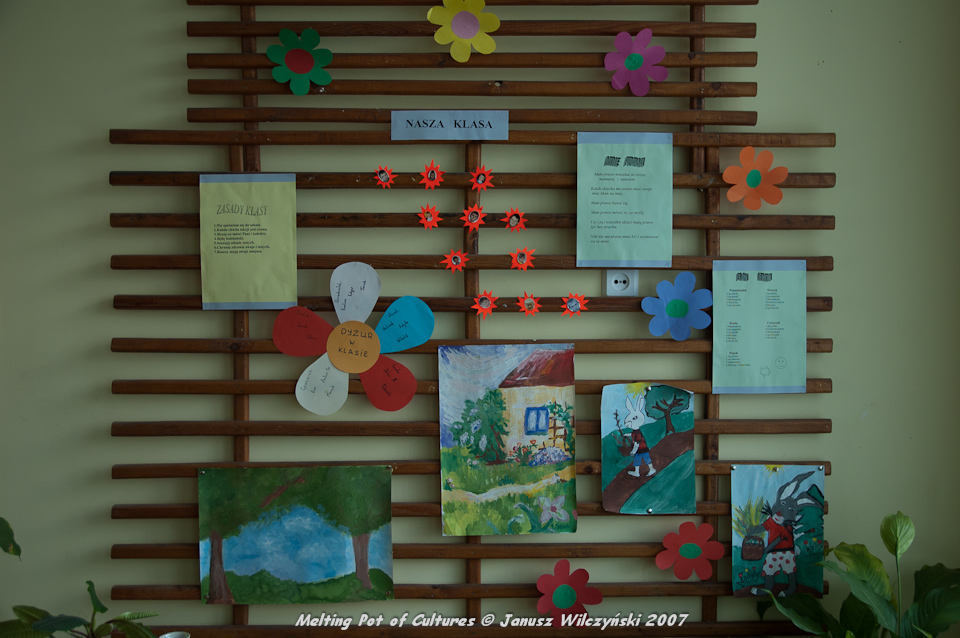 |
| Nikon D70, 18-70 |
It was 2005 when I visited a town of Nemezis situated only eight kilometers from Vilnius, the capital of Lithuania. Along the road leading to Vilnius there was certain inn famous for the meetings of poets and conspirators. There, away from the agents of the tsarist Okhrana, in the 1829s gathered friends who celebrated freedom of speech and convictions while they enjoyed good wine and song. Among them there was Adam Mickwicz, Tomasz Zan and Jan Czeczot as well as other. Był rok 2005, kiedy odwiedziłem podwileńską miejscowość Niemieża, położoną 8 kilometrów od stolicy Litwy. Przy trakcie prowadzącym z Wilna znajdowała się dawniej karczma, w której z dala od agentów carskiej ochrany, zbierali się w latach dwudziestych XIX wieku przyjaciele cnót i nauk. Adam Mickiewicz, Tomasz Zan, Jan Czeczot i inni czcili tu Bachusa w pieśni i winie.
 |
| Nikon D70, 18-70 |
Nemezis has been inhabited by Tatars often called Lipka since the 14th century. The small viallage has been for centuries the home of Poles, Lithuanians, Belarussians, Russians and Tatars who lived peacefully as close neighbours. Today there is around one hundred and twenty Tatars in the village.
Niemieża to miejscowość zamieszkała od XIV wieku przez Tatarów zwanych też Lipkami. Żyją tu obok siebie, Polacy stanowiący większość mieszkańców, Litwini, Białorusini, Rosjanie i Tatarzy. Ci ostatni w liczbie około stu dwudziestu osób.

The name of the village, Nemezis, comes from the way the land was given to Tatars, who could take it without measuring it. It is said that it was the will of Grand Duke of Lithuania Vytautas the Great who invited Lipka to his country in the late 14th century. In 1684 the mosque was built which was later burned down and rebuilt in 1909. Nazwa Niemieża pochodzi od sposobu przydzielania ziemi Tatarom, którą mieli brać nie mierząc jej. Taka była ponoć wola Wielkiego Księcia Witolda, który osiedlił tu Lipków w końcu wieku XIV. W 1684 roku zbudowano meczet, który później spłonął a obecny powstał w roku 1909.
 |
| Nikon D70, 18-70 |
The mosque in Nemezis is surrounded by old commentary where hundreds of Tatars were buried. Dookoła meczetu niemieskiego znajduje się stary mizar, czyli cmentarz tatarski z kilkuset nagrobkami.
 |
| Nikon D70, 18-70 |
 |
| Nikon D70, 18-70 |
 |
| Nikon D70, 18-70 |
High school in Nemezis in trilingual. Nearly six hundred students attend it and half of them are Polish. Three languages are used in school, Polish, Russian and Lithuanian. Unfortunately the children who decide to take Polish are treated unfairly when compared to Lithuanian children whose classrooms are much better equipped. Here, you must pay certain price for admitting to be Polish. Lithuanian government discourage children from remembering of their Polish background which is most unjust and discriminatory. Most interesting is that at school in Nemezis students can choose to study one of three religions in their obligatory Religious Studies classes; Catholic, Eastern Orthodox or Muslim.

Szkoła Średnia w Niemieży jest trójjęzyczna i są tu klasy polskie, litewskie i rosyjskie. Naukę pobiera blisko 600 uczniów, z których ponad połowę stanowią Polacy. Muszę stwierdzić, że klasy polskich uczniów są dużo gorzej wyposażone, niż sale w których uczą się dzieci litewskie. Taką cenę płaci się tu za polskość i taka dziwna i niesprawiedliwa jest polityka rządu Republiki Litewskiej wobec Polaków. Niemieska szkoła jest jedyną na Litwie, gdzie wykładane są trzy religie: katolicka, prawosławna i mahometańska.
 |
| Sklep w Niemieży |
I was not taken aback by the presence of Tatars in Lithuania as I expected it. Nevertheless my astonishment was great when on entering one of the small shops, in search of famous Lithuanian bread, I found out that the owner had the same surname as I. The lady, who sold me bread, was amazed and rather disapproving that I knew nothing of my Tatars roots. She was convinced that every person bearing Wilczyński surname had to come from Nemezis. She advised me to visit the mosque and the cemetery to look for my ancestors which surely must be there. I was left speechless. The lady could not believe when I tried to explain to her that my family lived for centuries right in the middle of Poland, north of Warsaw, that they were all Catholics and had nothing to do with Tatars. When I walked around the graveyard I found the tomb of Imman Joseph Wilczyński who died in 1925! The inscriptions on the tombstones were in three languages, Polish, Russian and Arab.


Nie zaskoczyła mnie obecność Tatarów na Litwie ale jakież było moje zdziwienie, gdy po wejściu do jednego z miejscowych sklepów spożywczych, poszukując słynnego wileńskiego chleba, znalazłem na tabliczce informującej o osobie prowadzącej sklep swoje nazwisko. Natychmiast wyraziłem swoje zaskoczenie. Pani o wyraźnych rysach tatarskich, która podała mi chleb, stwierdziła z wyraźnym wyrzutem w moją stronę, że nie tylko ona , ale całe gniazdo Wilczyńskich znajduje się tu w Niemieży i to wstyd, że nic nie wiem o swoim tatarskim pochodzeniu. Formalnie odebrało mi mowę. Widząc moją konsternację powiedziała żebym koniecznie obejrzał meczet i mizar, bo tam leży wielu Wilczyńskich. Na cmentarzyku okalającym nieduży drewniany meczet, znalazłem pośród innych nagrobek Imama Józefa Wilczyńskiego zmarłego w 1925 roku. Inskrypcje na kamieniach nagrobnych są w języku polskim, lub rosyjskim i arabskim.


The explanation to this confusion is rather simple. Tatars who came to live in Lithuania centuries ago, often took well-known names of Polish noblemen for their owns, strengthening and enriching the melting pot of cultures of the Commonwealth of Lithuania and Poland. Tatarzy, którzy osiedli na terenie Litwy, przybierali często nazwiska szlachty polskiej, wzbogacając tygiel kultur Rzeczypospolitej.
KOMENTARZE:





















Brak komentarzy:
Prześlij komentarz